BGD BASE 3
£3,400.00
Description
BGD BASE 3 – Performance, Safety, and Freedom in One Epic Flight
Soaring into the skies with the BGD BASE 3 means embracing performance, precision, and pure joy. Designed for sport-class pilots seeking dynamic handling and top-end performance without sacrificing safety, this paraglider captures the spirit of adventure. Whether you’re exploring cross-country routes or challenging personal limits, the BASE 3 gives you the confidence to go further, faster, and with absolute control.BGD BASE 3
Why Choose the BGD BASE 3?
Not every wing offers the perfect blend of security, maneuverability, and speed. Fortunately, the BGD BASE 3 delivers all that—and more. Crafted by Bruce Goldsmith and his elite design team, this EN-B+ wing speaks directly to pilots hungry for excitement without crossing into high-risk territory. Consequently, it’s become the favorite companion for ambitious XC adventurers.滑翔 伞
Let’s explore everything that makes the BASE 3 exceptional.
Aerodynamic Innovation That Elevates Your Flight
Bruce’s Airfoil Magic
BGD’s signature Cord Cut Billow (CCB) technology enhances the BASE 3’s performance by enabling a smooth, wrinkle-free top surface. At the same time, its optimally tensioned cells deliver refined pressure distribution, which significantly improves glide and collapse resistance. Moreover, the internal structure is lighter and stronger than before, using advanced materials that shave weight without sacrificing strength.
Optimized for Real Conditions
The BASE 3 isn’t just a test-bed performer—it thrives in real-world flying. In turbulent air, you’ll notice how stable the wing remains. In thermal cores, it bites and climbs aggressively yet controllably. Additionally, you can bank into turns with confidence, thanks to its precise brake input response.
Who Is the BASE 3 For?
The BGD BASE 3 caters to a specific class of pilots. You’ll want this wing if:
-
You’ve graduated from low-B gliders and now crave enhanced XC potential.
-
You want EN-B security but with EN-C-like speed and glide.
-
You fly regularly and wish to upgrade without leaping into the extremes.
-
You appreciate playful handling and immersive control on every flight.
Although it suits a wide range of skilled pilots, it’s most rewarding for thermaling addicts and explorers aiming for 100+ km flights with lower stress levels.
Performance Meets Comfort in the Sky
True Speed, Not Just Hype
Boasting an increased top speed of over 55 km/h, the BASE 3 punches through headwinds and glides across long transitions effortlessly. Additionally, the efficient speed system translates to better usable speed range and less fatigue when using bar for extended durations.
Serious Stability
From the A-lines up, the BASE 3 is designed with a combination of flat arc geometry and precise line layout that ensures structural integrity. In rough air, you’ll feel a reassuring steadiness. Even more impressively, small collapses rarely propagate, making the glider incredibly forgiving during active flying.
Colors and Sizes That Match Your Style and Weight
BGD understands that personalization matters. That’s why the BASE 3 comes in multiple vibrant color schemes—each not only beautiful but highly visible in the sky.
You’ll also find a wide range of sizes, accommodating takeoff weights from 55kg to over 120kg. Consequently, pilots across the spectrum can find their perfect fit without compromise.
Highlighted Features of the BGD BASE 3
-
✅ EN-B Certification: High-end performance wrapped in mid-level safety
-
✅ 55+ km/h Speed: Confident transitions even in windy conditions
-
✅ Cord Cut Billow Technology: Reduced wrinkles for superior airflow
-
✅ Refined Brake Line Geometry: Crisp turning and responsive feedback
-
✅ Optimized Internal Structure: Lightweight yet durable build
-
✅ 3D Panel Shaping: Clean leading edge improves glide efficiency
-
✅ Exceptional Thermal Climbing: Boosted efficiency in weak lift
-
✅ Low Line Drag Profile: Cleaner airflow, better performance
-
✅ Dynamic Colors: Choose from multiple high-visibility options
-
✅ Sizes for All Pilots: Fit for lightweights and heavyweights alike
How Does the BASE 3 Feel in Flight?
Smooth, Responsive, and Stable
Pilots consistently report that the BASE 3 offers a fun, forgiving, yet highly reactive ride. From launch to landing, it behaves predictably—even when you’re pushing into strong thermals or flying low near terrain. Moreover, it provides ample feedback without being twitchy, letting you stay connected to the air without fatigue.
Takeoff and Landing: Effortless Execution
Even in marginal wind conditions, the BASE 3 rises easily during inflation, and it stabilizes quickly overhead. Likewise, its slow stall speed ensures smoother landings—even on tight or elevated terrain.
Safety Guide for BGD BASE 3 Pilots
Flying the BASE 3 responsibly begins with a strong foundation in piloting skills. Here’s how to maximize both safety and enjoyment:
Before Launch
-
🔹 Complete a full pre-flight check including risers, lines, and harness
-
🔹 Review weather conditions—especially wind speed and cloud development
-
🔹 Use a certified reserve appropriate to your glider size and weight
In the Air
-
🔹 Fly actively in turbulent conditions—manage pitch and roll using subtle brake inputs
-
🔹 Avoid flying beyond your skill level, especially in strong thermals
-
🔹 Maintain proper separation from other gliders, terrain, and obstacles
After Landing
-
🔹 Inspect the wing for line tangles or minor wear
-
🔹 Pack it dry and clean—avoid UV and moisture exposure
-
🔹 Log your flight hours to track wear and progression
Mastering How to Fly the BGD BASE 3
To get the most out of your BASE 3, invest in continual skill development. Enroll in advanced XC clinics, analyze your flights, and use digital tools (like GPS and variometers) for smarter decision-making.
Additionally, flying with others helps improve judgment. Join local clubs, exchange knowledge, and fly in varied conditions to truly unlock your potential.
Remember, even the most capable wing shines best in the hands of a prepared and practiced pilot.
BGD BASE 3 Technical Specifications Overview
| Size | Takeoff Weight Range | Flat Area (m²) | Cells | Glider Weight (kg) | Top Speed (km/h) |
|---|---|---|---|---|---|
| XS | 55 – 75 kg | ~21 | 60 | ~4.3 | 55+ |
| S | 65 – 85 kg | ~23 | 60 | ~4.6 | 55+ |
| M | 75 – 95 kg | ~25 | 60 | ~4.9 | 55+ |
| ML | 85 – 105 kg | ~27 | 60 | ~5.2 | 55+ |
| L | 95 – 120 kg | ~29 | 60 | ~5.5 | 55+ |
Final Thoughts: Is the BGD BASE 3 Right for You?
If your flying goals involve distance, speed, and personal progression, the BGD BASE 3 is your perfect wing. It invites you to explore confidently, respond precisely, and grow continuously—all without overstepping safety boundaries.
Furthermore, it looks phenomenal in the air, which makes every takeoff feel like a celebration. This glider doesn’t just perform—it inspires.
Precision Meets Performance in Every Flight
The BGD BASE 3 Paraglider isn’t just a wing—it’s a revolution in mid-level EN-B paragliding. Designed for pilots who demand dynamic performance without sacrificing security, the BASE 3 bridges the gap between playful and powerful. And because it’s engineered with Bruce Goldsmith’s signature design precision, it flies like a dream—right out of the bag.BGD Adam Paraglider EN/LTF-A
Speed, Stability, and Unmatched Handling BGD BASE 3 Paraglider
From mountain launches to coastal ridge soaring, the BASE 3 handles it all. It’s fast when you need it, stable when it counts, and agile at every turn. Thanks to BGD’s progressive design features—like optimized arc and mini-ribs—the wing delivers crisp responsiveness, especially in thermals. So, you climb better, glide farther, and enjoy smoother transitions between lift bands.
Lightweight Feel, Heavyweight Confidence with BGD BASE 3 Paraglider
While the BASE 3 feels featherlight in the air, it gives you heavyweight confidence under pressure. Designed with a semi-light construction, it balances durability and packability perfectly. Whether you’re hike-and-flying or cross-country cruising, you’ll appreciate how easy it is to carry—and how strong it feels once launched.
BGD BASE 3 Built to Grow With You
Let’s face it—you’re not the same pilot you were last year. So why fly a wing that doesn’t evolve with you? The BGD BASE 3 Paraglider grows as your skills do. It’s forgiving enough for advancing intermediates, yet responsive enough to thrill experienced pilots. Transitioning from mellow to ambitious has never been this seamless.
Vibrant Looks, Proven Safety
Why blend in when you can stand out—with safety to match? The BASE 3 doesn’t just turn heads with its bold color schemes—it turns turbulence into tranquility. Certified EN-B with high passive safety, it inspires confidence in rough conditions while allowing dynamic piloting when skies are calm.
Take the Leap—BASE 3 Awaits
If your goal is to unlock your true flying potential, the BGD BASE 3 Paraglider is the wing to take you there. Because every flight should be about progression—not limitation. Fly farther, soar smarter, and trust the BASE 3 to take you beyond the basics.
Specs of BGD BASE 3 Paraglider
| XS | S | M | ML | L | |
|---|---|---|---|---|---|
| Linear scaling factor | 0.93 | 0.96 | 1 | 1.04 | 1.08 |
| Projected area (m²) | 17.7 | 19.2 | 20.6 | 22.2 | 24 |
| Flat area (m²) | 20.9 | 22.7 | 24.4 | 26.3 | 28.4 |
| Glider weight (kg) | 4.7 | 4.9 | 5.3 | 5.5 | 5.7 |
| Number of main lines (A/B/C) | 3/2/3 | ||||
| Cells | 57 | ||||
| Flat aspect ratio | 5.7 | ||||
| Root chord (m) | 2.5 | 2.6 | 2.7 | 2.8 | 2.9 |
| Flat span (m) | 10.9 | 11.4 | 11.8 | 12.2 | 12.7 |
| Ideal weight range (kg) | 60-73 | 73-84 | 84-95 | 95-108 | 108-125 |
| Certified weight range (kg) | 55-75 | 65-85 | 75-95 | 88-108 | 100-125 |
| Certification (EN/LTF) | B | ||||
Info
The BASE 3 is our sports-intermediate high-B. Our optimisation software allowed us to increase the performance without increasing the aspect ratio compared to its predecessor. The BASE 3 is born from the BGD Performance Quest project, whose first offspring was the DIVA 2. It clearly shares some family traits: the high arc, short lines, tapered shape and raked wingtips give it a very distinctive silhouette, as well as multiple performance and stability advantages.
Like the LYNX 2, it is a 2.5-liner. The performance gains from the lower line consumption are enhanced by the lines being unsheathed micro-lines. The 2.5-line layout also gives a really nice two-liner feel with the rear-riser steering.
The BASE 3 has excellent pitch stability and very low surge tendency, yet it remains a talkative glider, giving the pilot good feedback at all times. And something new for BGD – the BASE 3 has winglets. A safety feature, they help the glider exit from steep spiral dives.
The BASE 3 is a real feel-good glider with excellent glide performance, the tool for pilots to break their personal XC bests while feeling safe and at ease.
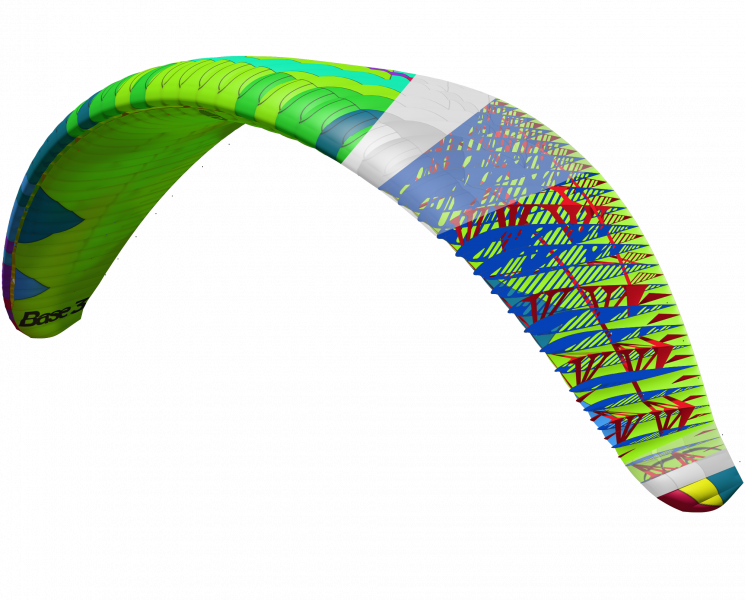
Target
The BASE 3 is for cross-country pilots who have started flying XC on a low-B and are looking for more performance to push their distances. It is stable but informative, and has some secret ninja skills: it’s slow-speed handling make it a top-landing demon, and it’s really easy to launch in strong winds because it is so pitch stable and does not surge forward. Performance-wise it is top of the EN-B class, but safety-wise it could be a low-B.2 lite
Tips for Flying the BGD BASE 3 Like a Pro
Flying the BGD BASE 3 can be an exhilarating experience when you harness its full potential. To help you get the most out of every flight, here are some expert tips tailored specifically for this dynamic wing.2 lite
1. Perfect Your Launch Technique
Start strong by practicing smooth inflations and controlled takeoffs. The BASE 3 inflates predictably, but consistent technique ensures you get airborne safely and confidently—even in tricky wind conditions.
2. Stay Active in Turbulence
The key to stability in rough air is active flying. Use subtle brake inputs and weight shifts to keep the wing’s angle of attack steady. This not only reduces collapse risk but also helps you maintain better climb rates.
3. Master Speed Bar Usage
Learn to balance brake pressure and speed bar engagement. The BASE 3’s efficient speed system allows you to accelerate without compromising control. Use this skill especially on long transitions or when pushing through headwinds.
4. Practice Smooth Turns
Make your turns fluid by coordinating brake input with weight shift. The BASE 3 responds crisply, so avoid abrupt or harsh movements that could destabilize the wing. Fluid turns improve thermal centering and reduce pilot fatigue.
5. Monitor Weather Closely
Always check the forecast before flying. The BASE 3 performs best in moderate conditions—strong winds or gusty thermals require extra caution and advanced piloting skills.
6. Regularly Inspect Your Gear
Keep your wing and harness in top condition with frequent inspections. Look out for line wear, fabric damage, and riser integrity. Well-maintained equipment ensures safer flights and extends your gear’s life.
7. Log Your Flights and Progress
Track your flying hours, conditions, and notes on each flight. Reviewing your log helps you recognize patterns, set goals, and gradually enhance your skills with the BASE 3.
8. Fly With a Buddy
Flying with a friend or mentor improves safety and learning. Share insights, discuss techniques, and stay supported—especially when exploring new sites or conditions.
Safety Guide for Flying the BGD BASE 3
Safety always comes first, no matter your experience level or the glider you fly. The BGD BASE 3 offers a great balance of performance and security, but it requires respect and smart piloting to keep every flight safe and enjoyable. Follow these guidelines to protect yourself, your wing, and everyone around you.
Pre-Flight Safety Checks
-
🔹 Inspect Your Equipment Thoroughly: Before every flight, carefully check your wing, lines, risers, and harness. Look for any signs of wear, tears, or damage that could affect performance or safety.
-
🔹 Confirm Proper Harness Attachment: Make sure your harness is securely fastened and that all buckles and carabiners are locked.
-
🔹 Review Weather Conditions: Fly only in conditions suitable for your skill level and the BASE 3’s EN-B certification. Avoid strong winds, turbulence, or rapidly changing weather patterns.
-
🔹 Check Rescue Parachute: Verify that your reserve parachute is properly packed and accessible in case of emergencies.
Safe Flying Practices
-
🔹 Fly Within Your Skill Level: The BASE 3 is designed for intermediate to advanced pilots. Don’t push beyond your limits, especially when flying in challenging weather or unfamiliar terrain.
-
🔹 Maintain Active Flying: Stay engaged and use active flying techniques to manage turbulence and keep the wing stable. Passive flying increases collapse risk.
-
🔹 Monitor Altitude and Airspace: Always be aware of your altitude and any local airspace restrictions. Maintain safe distances from other pilots, obstacles, and terrain.
-
🔹 Use Radio Communication: When flying with others, keep in contact to coordinate maneuvers and maintain safety in shared airspace.
-
🔹 Plan Your Flight and Landing Zones: Identify safe landing areas in advance, and avoid risky or confined spots. Always have a backup plan.
Emergency Procedures
-
🔹 Practice Reserve Deployment: Know how and when to deploy your reserve parachute. Regularly rehearse the procedure on the ground with your instructor or a trusted pilot.
-
🔹 Handle Collapses Calmly: If the wing collapses partially or fully, stay calm and apply proper recovery techniques, such as weight shifting and controlled brake inputs.
-
🔹 Prepare for Unexpected Situations: Be ready to adapt to sudden weather changes or mechanical issues. Maintaining composure can prevent panic and accidents.
Post-Flight Care
-
🔹 Inspect Your Wing After Landing: Check for any damage sustained during flight or landing. Promptly address small issues before they become bigger problems.
-
🔹 Properly Pack and Store Your Glider: Avoid prolonged exposure to moisture, dirt, and direct sunlight. Store your wing in a dry, cool place to prolong its lifespan.
Mastering How to Fly the BGD BASE 3
Flying the BGD BASE 3 is a rewarding experience that challenges and delights pilots who are ready to push their skills further. To truly unlock the potential of this wing, you need a solid understanding of how to handle its dynamics, read the air, and adapt to changing conditions. Here’s your guide to mastering flight with the BASE 3.
Build a Strong Foundation
Before taking off, ensure you have mastered basic piloting skills and safety protocols. The BASE 3 demands active flying and precise control, so you should feel comfortable with smooth inflation, effective brake modulation, and emergency procedures. If you’re new to mid-level gliders, consider training with an experienced instructor or joining a pilot club.
Understand the Wing’s Behavior
The BASE 3 reacts immediately to your inputs, offering crisp feedback through the brakes and risers. This responsiveness rewards pilots who maintain a steady hand and fine-tune their inputs during flight. For example, subtle brake adjustments can maintain optimal pitch and bank angles while centering thermals efficiently. Avoid overcorrecting, which can destabilize the wing and waste energy.
Use Active Flying Techniques
Active flying means continuously adjusting the wing to smooth out turbulence and maintain efficiency. This involves light brake inputs, weight shifting, and body positioning to keep the wing’s angle of attack stable. By flying actively, you reduce the risk of collapses and improve climb rates, especially in turbulent thermals.
Optimize Your Speed Management
The BASE 3’s speed system extends your usable speed range. Learn to balance bar pressure with brake input to maintain control at high speeds. Practice smooth transitions between trimmed flight and accelerated flight, ensuring you never push the wing beyond its designed limits. This skill is essential during long cross-country flights, where efficiency and endurance matter most.2 base 2
Thermal Soaring Strategies
Finding and centering thermals is key to maximizing your flight duration. Use the BASE 3’s agility to make tight, controlled turns inside lift cores. Pay attention to variometer feedback and environmental clues such as bird activity or cloud formations. Remember, patience and smooth control are more effective than aggressive maneuvers when climbing.2 base 2
Prepare for Changing Conditions
Weather can be unpredictable, so stay alert to shifts in wind strength and direction. The BASE 3 is designed to be stable but requires your attention to maintain safety. Adjust your flying style accordingly—slow down in rough air, fly actively in gusts, and be ready to deploy your reserve if necessary.2 base 2
Practice Regularly and Reflect
Consistent practice builds muscle memory and confidence. After each flight, review your performance, noting areas where control felt effortless or challenging. Keeping a flight log and discussing flights with fellow pilots can accelerate your learning curve. Remember, every pilot progresses at their own pace—focus on steady improvement rather than rushing.2 base 2
Designer’s notes of BGD BASE 3 Paraglider
Like the DIVA 2, the BASE 3 has a high arc and short lines. The high arc came about on the DIVA 2 primarily to improve the glide ratio, but we noticed this also resulted in extremely gentle collapse behaviour. Short lines reduce drag and also increase pitch stability, while leaving some roll for a fun and lively feel.
It has a reflex profile. This design is often associated with paramotor wings, and it means the profile has a natural pitch-up tendency. With a reflex profile, a lot of lift is produced near the leading edge, creating a force that acts against collapses and improves both active and passive safety. It makes the glider very stable on full bar, and collapses are very easy to anticipate and stop.
The tapered planform gives very good slow-speed characteristics, a slow stall speed and a wide margin for pilot error. The raked wingtips very effectively reduce drag.
The C-riser steering allows very effective pitch control, and the neoprene ‘cradle’ which serves as a handle is comfortable to hold and easy to use. Unlike a bar-style handle, there are no bits sticking out that could catch in your lines.
We have chosen to use cloths that are durable and hard wearing, for real-life abrasion-resistance. The unsheathed Aramid lines are Edelrid 8001U. They have a waterproof coating, and are very dimensionally stable so your glider will stay in trim.
Material
| Top surface | Porcher Skytex 38g/m² |
|---|---|
| Bottom surface | Porcher Eazyfly 40g/m² |
| Internal structure | Porcher Skytex hard finish 40g/m² |
| Nose reinforcing | High modulus nylon rod 2mm, 1.5mm |
| Risers | 12mm Kevlar / nylon webbing |
| Pulleys | Riley / Sprenger |
| Top lines | Edelrid Magix Pro Dry 8001U |
| Middle lines | Edelrid Magix Pro Dry 8001U |
| Lower lines | Edelrid Magix Pro Dry 8001U |
| Brakes | Liros DSL |
Related Videos
Base 3: Top of the stack
06-12-2024
Top of the stack! The BASE 3 is a cross-country wing with top-of-B-class performance and low-B safety. Hop on, clip in and sky out! More
Certika test Base 3
13-01-2025
Join Certika test pilot Cedric Nieddu as he runs through the EN test manoeuvres on the BASE 3. More
Frequently Asked Questions (FAQ) about the BGD BASE 3
Q: Who is the BGD BASE 3 designed for?
A: The BASE 3 targets intermediate to advanced pilots looking for a high-performance EN-B wing that combines safety with speed and agility. It’s perfect for pilots ready to push their cross-country flying without sacrificing stability.the base 2 film
Q: How does the BASE 3 differ from the previous BASE 2 model?
A: The BASE 3 offers improved glide performance, faster top speed, and enhanced pitch stability. Thanks to updated Cord Cut Billow technology and refined internal structure, it feels more responsive and stable in turbulent air.the base 2 film
Q: Can beginners safely fly the BASE 3?
A: The BASE 3 is not recommended for beginners. Pilots should have experience with low-B or beginner wings and be comfortable with active flying techniques before progressing to this model.the base 2 film
Q: What size should I choose?
A: Select your size based on your all-up flying weight (including gear). The BASE 3 comes in multiple sizes from XS to L, accommodating pilots from about 55 kg up to 120+ kg. Refer to the weight ranges to find your best fit.
Q: Is the BASE 3 suitable for hike-and-fly adventures?
A: While the BASE 3 isn’t ultra-lightweight, its balanced weight and packability make it a solid choice for pilots who occasionally hike to launch points, especially in smaller sizes.
Q: What kind of maintenance does the BASE 3 require?
A: Regular inspections of lines, risers, and canopy fabric are essential. Always store your wing in a dry, shaded environment and avoid prolonged UV exposure. Proper care ensures durability and peak performance season after season.
Q: What safety features does the BASE 3 include?
A: The BASE 3 incorporates stable design geometry, Cord Cut Billow technology for improved pressure distribution, and an efficient brake line system to give pilots responsive control and reduced collapse risk.
Q: Can I use the BASE 3 for competition flying?
A: While the BASE 3 excels in performance and XC flying, it is not a competition-level wing. Pilots seeking competition performance may want to explore higher-class EN-C or D wings.
Additional information
| Size | XS, S, M, ML, L |
|---|---|
| color | Flame, Glacier, Terra |
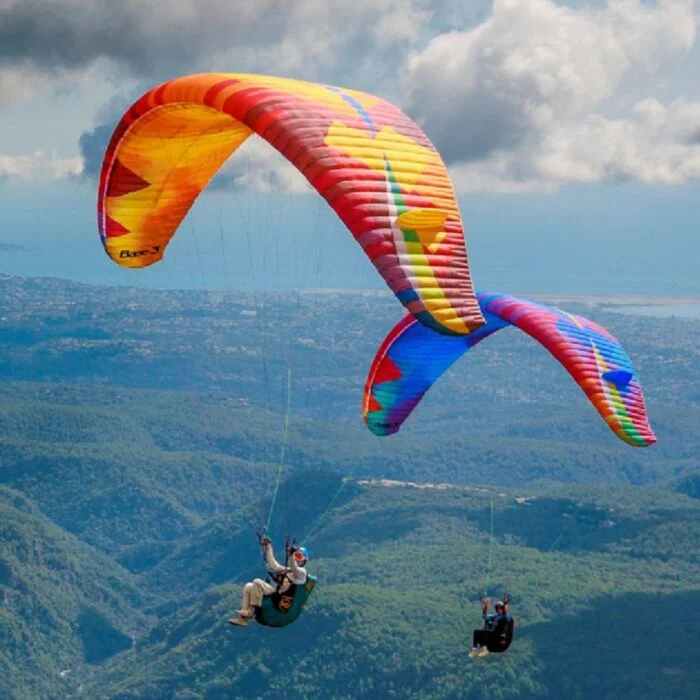
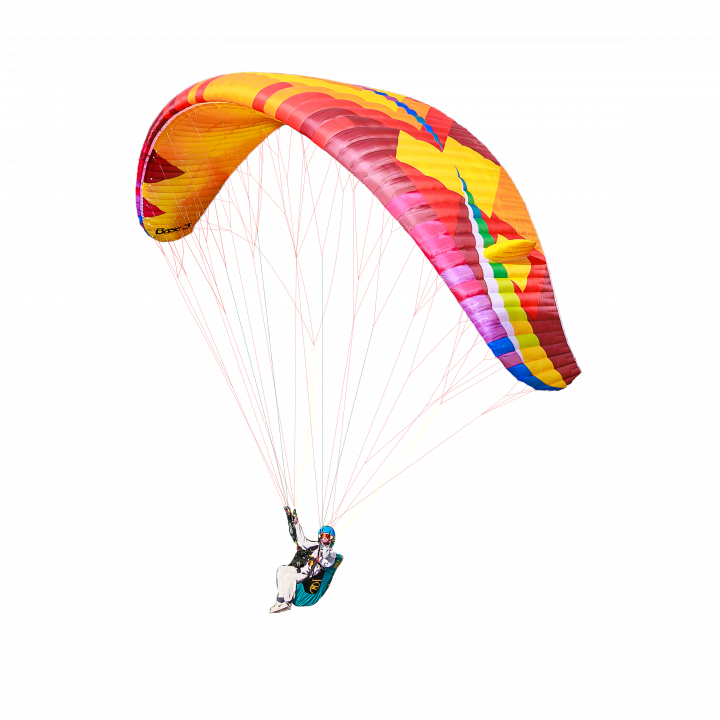

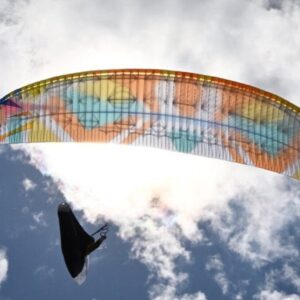

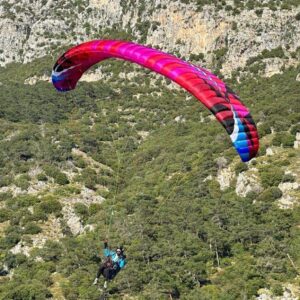
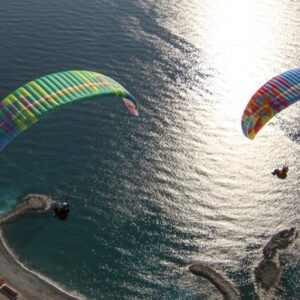
Reviews
There are no reviews yet.